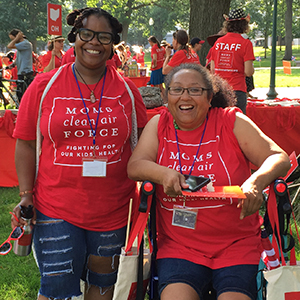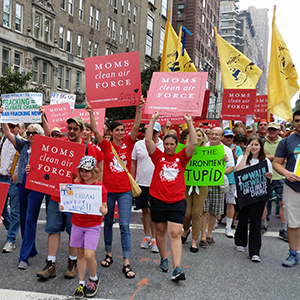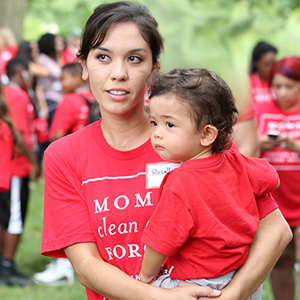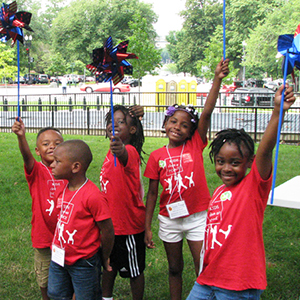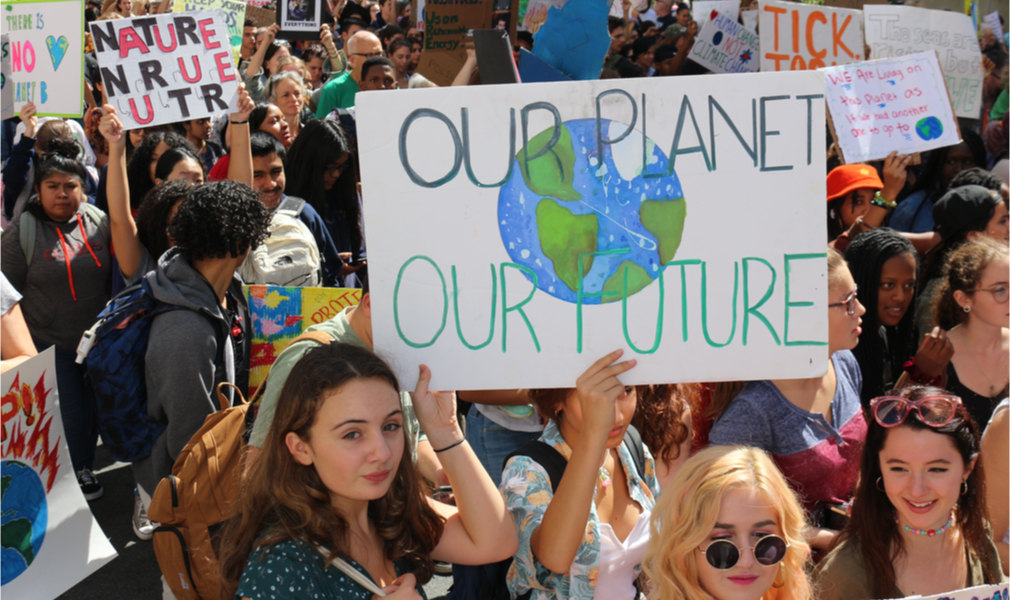
Last Friday’s youth-led Climate Strike was historic and beautiful. With 4 million people striking around world, our children sent a powerful message. As NYC student demonstrators chanted, “You had a future, and so should we.” Then, “We vote next.”
These future voters will register to vote when it’s their time, but many are inspired to do more right now.
Here are 10 more things you and your kids can do to help solve the climate crisis and protect the future:
- Figure out how to use less energy. Change needs to begin with each and every one of us. That means taking a look at how we actually use – and waste – energy, then getting real about what we can do differently. Start by using this carbon footprint calculator to estimate how much energy your kids (and you) are using. Then determine ways to use less, like unplugging electronics when they’re not being used, or charging their games, tablets and phones using solar energy.
- Buy less; share and swap more. Consumption drives climate change. It takes energy to produce, package, ship, and even throw away the stuff we buy. Tweens and teens spend $44 billion a year on clothes, electronics and other gadgets, cosmetics and personal care products, and trendy fads that go out of style almost overnight. Meanwhile, buying less is something every single kid can do TODAY. Encourage yours to share and swap more. They know about EBay, Craigslist, and Etsy; here are a few other sites to find “new to them” games, books, and clothes without having to buy “brand new.”
- Register to vote. If we want to stop climate change, we need to change laws that encourage burning fossil fuels and cutting down protective forests. The way to do that is by electing legislators who support a strong climate agenda. If your child is 18 or older, make sure they register to vote.
- Use social media to encourage friends to register and vote. Even if your children can’t vote yet, they can use their social media to encourage others to do so. Twitter, Facebook, and Snap Chat are all playing an important role in increasing voter participation nationwide.
- Fight fake news. Use social media to #ShareClimateScience. Though social media have made it all too easy for fake news to spread, students can fight fake news by sharing climate science. Have your kids subscribe to The Daily Climate, Science Daily, or our very own Moms Clean Air Force to stay informed and help spread honest, accurate information about climate change and how we can beat it.
- Meet with local, state, and federal legislators. You don’t need to be a legal adult or a registered voter to meet with your elected officials. Set up a meeting in the legislator’s office, go to their office in the State House or on Capitol Hill, and invite them to a public hearing where they can hear you testify about why fighting climate change matters to you (and to their re-election).
- Start a Climate Club at school. Scientific American offers these “how to” steps to get your club going. Among potential projects? Conduct a climate/carbon footprint audit of your school. Or, get in touch with the Young Activists Club in Takoma Park, MD, to find out how they got started.
- Plant trees on school grounds. Trees provide shade. They filter the air. They give birds a place to nest. And once they get big enough, they’re great for climbing. Trees can also reduce a school’s energy costs and make the school a more pleasant place to go. Students can easily plant young saplings and then help keep them watered. The Arbor Day Foundation can help students figure out what the best trees are to plant given local weather patterns.
- Stop school buses from idling. Idling buses and cars that sit outside a school waiting for students to come out of school unnecessarily burn gasoline and pollute the air. Monitoring at schools has shown elevated levels of air pollutants during after school hours when buses and parents are idling as they wait to pick up their kids. Drivers need to turn their engines off once they get in line to pick up students.
- Ask school officials to teach climate science. For political reasons, the federal government is limiting access to accurate information about climate science. Corporations that want to continue wasting energy and burning fossil fuels are filling the vacuum with fake news about climate change. That’s why it’s so important for schools to offer accurate, science-based curricula that will help students understand how serious the climate crisis is and inspire them to look for solutions. The following institutions offer on-line courses and course outlines that teachers and students can adopt to add climate science to their school’s curriculum: the National Education Association; American Museum of Natural History; Coursera; SERC (designed specifically for middle- and high-school teachers).
TELL YOUR REPRESENTATIVE: IT’S BEYOND TIME FOR CLIMATE SAFETY
